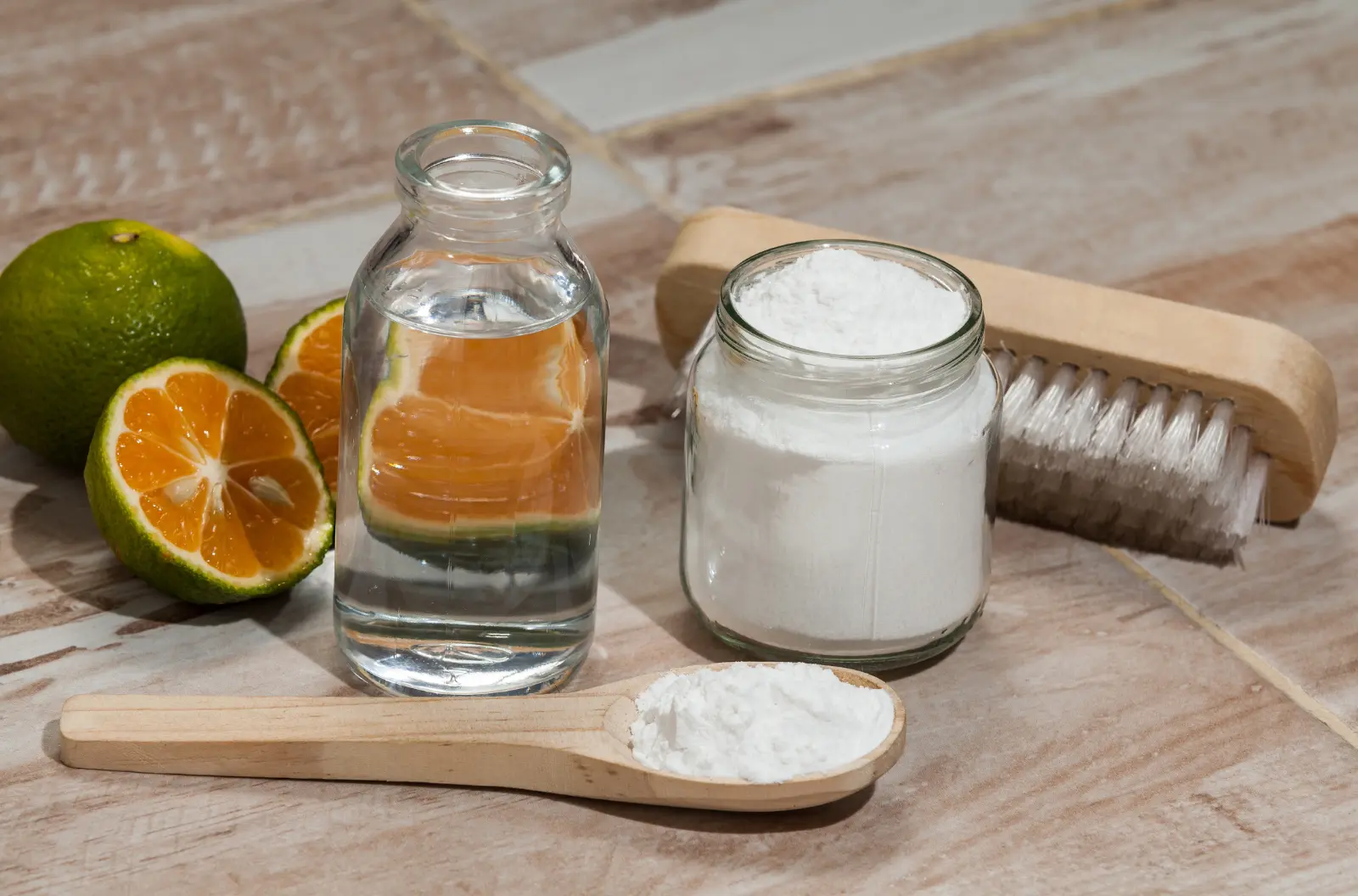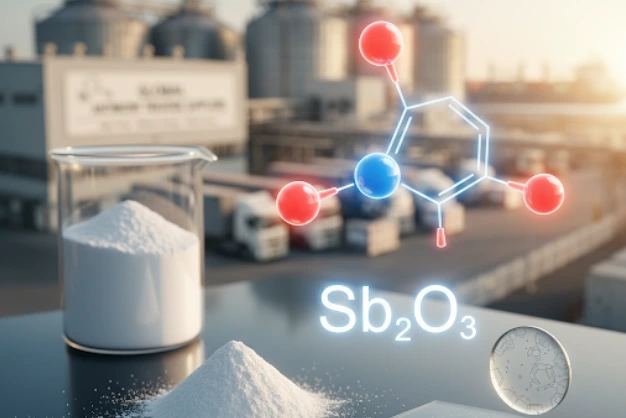TABLE OF CONTENTS
TABLE OF CONTENTS
Definition: Washing Soda vs Baking Soda
Washing Soda (Sodium Carbonate): Washing soda, chemically known as sodium carbonate (Na2CO3), is a strong alkaline compound. It appears as a white, coarse powder or crystalline substance. Washing soda is primarily used for heavy-duty cleaning tasks, such as laundry, degreasing, and descaling. Due to its high alkalinity, it effectively breaks down grease, grime, and mineral deposits. Washing soda is not safe for consumption and can cause skin irritation, so it should be handled with care.
Baking Soda (Sodium Bicarbonate): Baking soda, also known as sodium bicarbonate (NaHCO3), is a mild alkaline compound. It is a fine, white powder commonly found in kitchens and used primarily for baking. When combined with an acid, baking soda acts as a leavening agent, helping dough rise by producing carbon dioxide gas. Beyond baking, it is also used for gentle cleaning, deodorizing, and personal care. Baking soda is safe for consumption and gentle on the skin, making it a versatile household product.
Chemical Composition: Washing Soda vs Baking Soda
Washing Soda (Sodium Carbonate)
Chemical Name: Sodium Carbonate
Chemical Formula: Na2CO3
Components: 2 sodium (Na) atoms, 1 carbon (C) atom, 3 oxygen (O) atoms
pH Level: Approximately 11 (strong alkaline)
Properties:Effective for heavy-duty cleaning Breaks down grease, grime, and mineral deposits
Uses: Laundry, degreasing, descaling
Baking Soda (Sodium Bicarbonate)
Chemical Name: Sodium Bicarbonate
Chemical Formula: NaHCO3
Components: 1 sodium (Na) atom, 1 hydrogen (H) atom, 1 carbon (C) atom, 3 oxygen (O) atoms
pH Level: Approximately 8.3 (mild alkaline)
Properties:Acts as a leavening agent in baking Gentle cleaner and effective deodorizer
Uses: Baking, cleaning, deodorizing, personal care
Uses : Washing Soda vs Baking Soda
Baking Soda
Baking
Leavening Agent: Baking soda is a crucial ingredient in baking. When combined with an acidic component like vinegar, lemon juice, or buttermilk, it produces carbon dioxide gas. This reaction causes dough and batter to rise, resulting in light and fluffy baked goods.
Recipes: Commonly found in recipes for cookies, cakes, muffins, and quick breads. It ensures an even texture and helps achieve the desired rise in baked products.
Personal Care
Deodorant: Baking soda is often used as a natural deodorant due to its ability to neutralize odors. It can be applied directly to the skin or mixed with other ingredients like coconut oil and essential oils to make a DIY deodorant.
Oral Hygiene: Baking soda is a common ingredient in toothpaste and mouthwash. Its mild abrasiveness helps remove surface stains on teeth, and its alkalinity helps neutralize acids in the mouth, reducing bad breath.
Skincare: Baking soda can be used as an exfoliant to remove dead skin cells, leaving the skin smooth and refreshed. It can also be mixed into face masks to help cleanse pores and reduce acne.
Cleaning
Surface Cleaner: Baking soda is effective for cleaning various surfaces, including kitchen counters, sinks, and stovetops. Its mild abrasiveness allows it to scrub away grime without scratching surfaces.
Deodorizer: Baking soda neutralizes odors, making it useful for freshening refrigerators, carpets, shoes, and even trash cans. It can be sprinkled directly or used in sachets to absorb unpleasant smells.
Stain Removal: Baking soda can help lift stains from fabric and upholstery. Mixing it into a paste with water and applying it to stains before laundering can enhance stain removal.
Washing Soda
Laundry
Detergent Booster: Washing soda boosts the effectiveness of laundry detergents by softening hard water. This helps the detergent work more effectively, resulting in cleaner clothes. It also helps to keep washing machines free of limescale buildup.
Stain Removal: Washing soda is highly effective at removing stubborn stains such as grease, oil, blood, and wine. Pre-soaking stained fabrics in a washing soda solution before washing can enhance stain removal.
Odor Elimination: Washing soda helps neutralize odors in laundry, making it especially useful for eliminating musty smells from towels and workout clothes.
Heavy-Duty Cleaning
Grease Cutter: Washing soda is a powerful grease cutter, making it ideal for cleaning stovetops, ovens, grills, and other surfaces that accumulate heavy grease. It breaks down grease, making it easier to wipe away.
Descaling Agent: Washing soda effectively removes mineral deposits and limescale from appliances like dishwashers, coffee makers, and kettles. Regular use can help maintain the efficiency and longevity of these appliances.
Floor Cleaner: Washing soda can be used to clean hard floors, particularly in garages, workshops, and outdoor areas. It effectively removes oil, dirt, and other tough stains.
Industrial Uses
Manufacturing: Washing soda is used in the manufacturing of glass, paper, and detergents. It acts as a key ingredient in processes that require a strong alkaline compound.
pH Regulation: Washing soda helps control pH levels in various industrial processes, ensuring the desired chemical environment for manufacturing and production.
Water Treatment: In water treatment plants, washing soda is used to soften water and remove impurities. It helps prevent the buildup of scale in pipes and improves the overall quality of water.
Strength and pH Levels: Washing Soda vs Baking Soda
Washing Soda (Sodium Carbonate)
Strength: Washing soda is a strong alkaline compound, making it highly effective for heavy-duty cleaning tasks. Its strength allows it to break down stubborn grease, grime, and mineral deposits that other cleaners might not handle as effectively.
pH Level: Washing soda has a pH level of around 11, indicating its high alkalinity. This high pH level is what makes it so effective for tough cleaning jobs. However, its strength also means it can be harsh on skin and certain surfaces, so it should be used with caution.
Implications: Due to its high pH, washing soda is not suitable for use on delicate fabrics, aluminum, or surfaces that might react negatively to strong alkalinity. It is best reserved for laundry, descaling, and industrial applications where its powerful cleaning properties are needed.
Baking Soda (Sodium Bicarbonate)
Strength: Baking soda is a mild alkaline compound. It is gentle enough for use in personal care and household cleaning without causing damage or irritation. Its mildness makes it versatile and safe for a wide range of uses.
pH Level: Baking soda has a pH level of around 8.3, which is significantly lower than that of washing soda. This moderate alkalinity makes it safe for direct contact with skin and suitable for use in food preparation, personal care products, and general household cleaning.
Implications: The lower pH of baking soda means it is less likely to cause irritation or damage. It is safe for use on most fabrics, surfaces, and even in personal care routines. However, its mild nature also means it may not be as effective for heavy-duty cleaning tasks compared to washing soda.
Summary
Washing Soda: Strong alkaline, pH ~11, best for heavy-duty cleaning, laundry, and industrial uses. Handle with care due to its high strength and potential to irritate skin and damage certain materials.
Baking Soda: Mild alkaline, pH ~8.3, versatile for baking, personal care, and general cleaning. Safe for direct skin contact and use on a variety of surfaces. Not as powerful for tough cleaning jobs as washing soda.
Safety and Handling: Washing Soda vs Baking Soda
Washing Soda (Sodium Carbonate)
Skin Contact: Washing soda is a strong alkaline substance and can cause skin irritation or burns upon contact. It’s essential to wear gloves when handling washing soda to protect your skin from irritation.
Inhalation: Avoid inhaling the dust from washing soda as it can irritate the respiratory tract. Use in well-ventilated areas and consider wearing a mask to prevent inhalation of fine particles.
Eye Contact: Washing soda can cause severe eye irritation or damage. Always wear protective eyewear when using washing soda, especially for heavy-duty cleaning tasks.
Ingestion: Washing soda is not safe for consumption. Ingesting washing soda can lead to serious health issues, including gastrointestinal distress. Keep it out of reach of children and pets.
Storage: Store washing soda in a cool, dry place, away from moisture and direct sunlight. Ensure it is kept in a sealed container to prevent it from absorbing moisture from the air.
Baking Soda (Sodium Bicarbonate)
Skin Contact: Baking soda is generally safe for skin contact and is often used in personal care products. However, prolonged exposure or use on sensitive skin can sometimes cause mild irritation.
Inhalation: Inhaling large amounts of baking soda dust can cause respiratory irritation. While it is less irritating than washing soda, it’s still advisable to use in a well-ventilated area and avoid creating dust clouds.
Eye Contact: Baking soda can cause mild irritation if it gets into the eyes. Rinse thoroughly with water if contact occurs. Generally, it poses less risk to the eyes compared to washing soda.
Ingestion: Baking soda is safe for consumption in moderate amounts and is commonly used in baking and antacid products. However, excessive ingestion can lead to metabolic alkalosis, so it should be consumed within recommended limits.
Storage: Store baking soda in a cool, dry place, sealed in an airtight container to prevent it from clumping and absorbing odors. Baking soda tends to absorb moisture and odors, so proper storage is crucial to maintain its effectiveness.
Appearance and Availability: Washing Soda vs Baking Soda
Washing Soda (Sodium Carbonate)
Appearance
Texture: Washing soda typically has a coarse, granular texture. It may also appear as larger, crystalline particles.
Color: It is generally white or off-white.
Form: Available in powder or crystalline form, which makes it easy to handle and measure for various cleaning tasks.
Availability
Retail Stores: Washing soda is commonly found in the laundry or cleaning aisles of supermarkets, hardware stores, and home improvement stores.
Online Retailers: Easily available through various online platforms, where you can purchase it in different quantities to suit your needs.
Packaging: Sold in boxes or large bags, depending on the intended use (household vs. industrial). Bulk options are available for industrial or large-scale cleaning purposes.
Baking Soda (Sodium Bicarbonate)
Appearance
Texture: Baking soda has a fine, powdery texture. It is much finer and softer compared to washing soda.
Color: Pure white.
Form: Typically available as a fine powder, making it easy to mix with other ingredients for baking, cleaning, or personal care.
Availability
Retail Stores: Baking soda is widely available in grocery stores, typically found in the baking aisle. It’s also available in drugstores and general merchandise stores.
Online Retailers: Readily available through numerous online platforms, with options to buy in small quantities for household use or larger quantities for bulk purchases.
Packaging: Sold in small boxes, resealable bags, or large bulk containers. It is available in various sizes to accommodate different uses, from cooking to large-scale cleaning.
Conclusion
Summary of Key Differences
Chemical Composition
Washing Soda: Sodium carbonate (Na2CO3), strong alkaline, pH ~11.
Baking Soda: Sodium bicarbonate (NaHCO3), mild alkaline, pH ~8.3.
Uses
Washing Soda: Laundry detergent booster, heavy-duty cleaning, industrial uses.
Baking Soda: Baking, personal care (deodorant, toothpaste), general household cleaning.
Strength and pH Levels
Washing Soda: Highly alkaline, powerful for tough cleaning tasks.
Baking Soda: Mildly alkaline, safe for a wide range of applications, including personal care and food.
Safety and Handling
Washing Soda: Can cause skin irritation; use gloves and eye protection. Not safe for consumption.
Baking Soda: Generally safe for skin and consumption; minimal irritation risk.
Appearance and Availability
Washing Soda: Coarse, granular or crystalline; found in laundry aisles and online.
Baking Soda: Fine, powdery texture; found in baking aisles and drugstores.
Final Thoughts on Choosing the Right Product for Specific Needs
When deciding between washing soda and baking soda, consider your specific needs and the nature of the tasks at hand.
Choose Washing Soda if You Need
Choose Baking Soda if You Need
Both products offer significant benefits but serve different purposes due to their chemical properties and strengths. By understanding these key differences, you can make an informed decision and select the appropriate product to meet your specific requirements.
Contact Us
Questions or looking for a quote?





